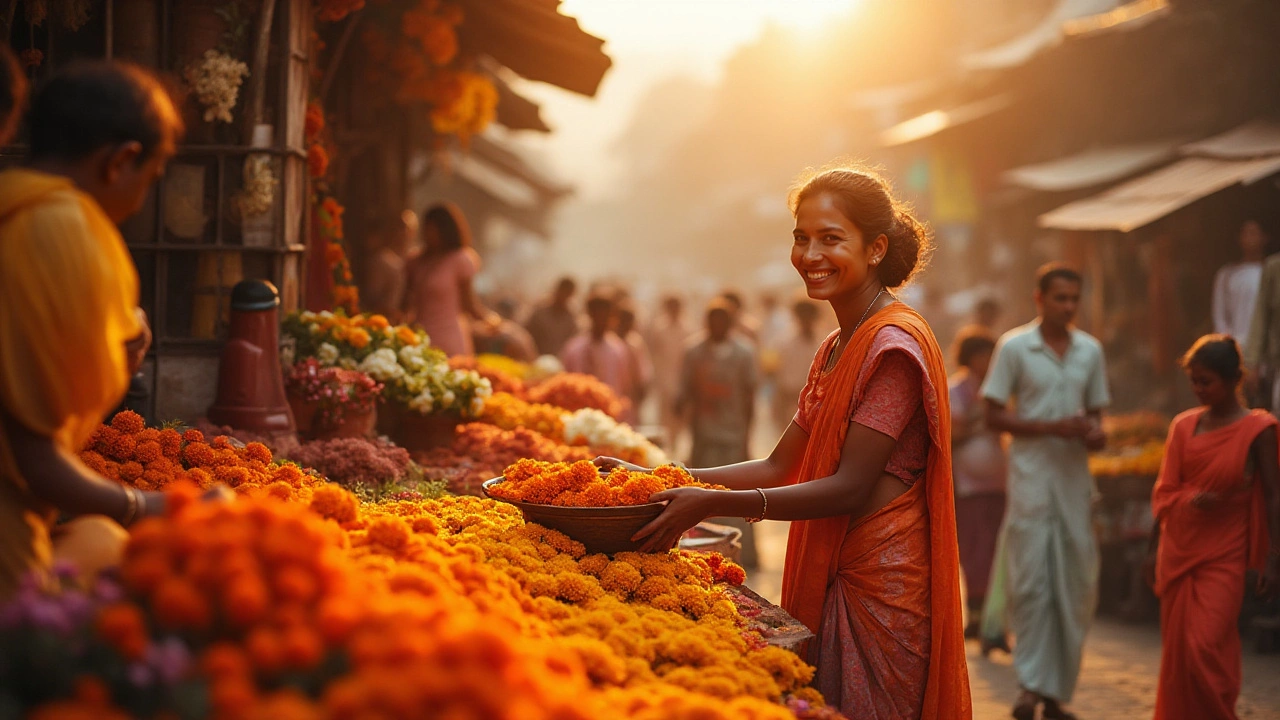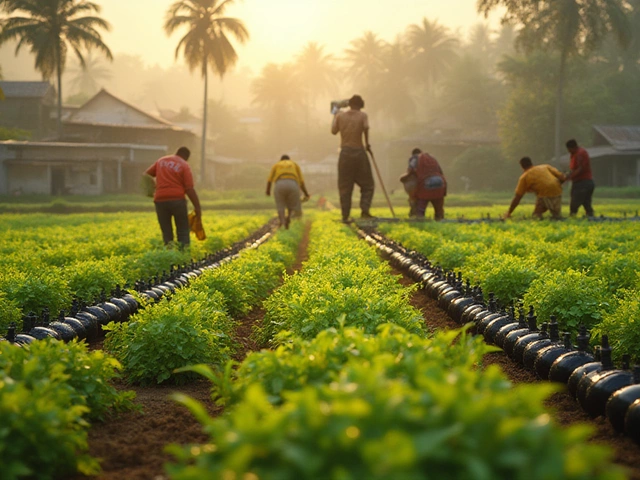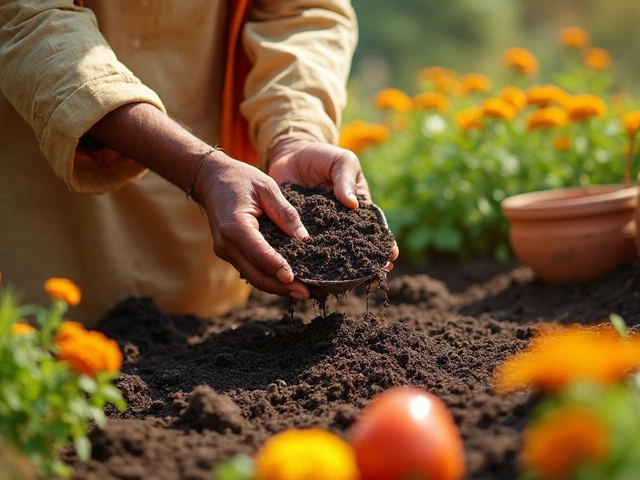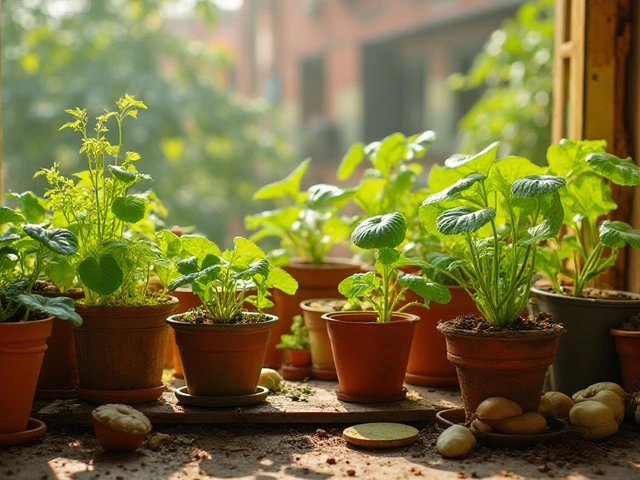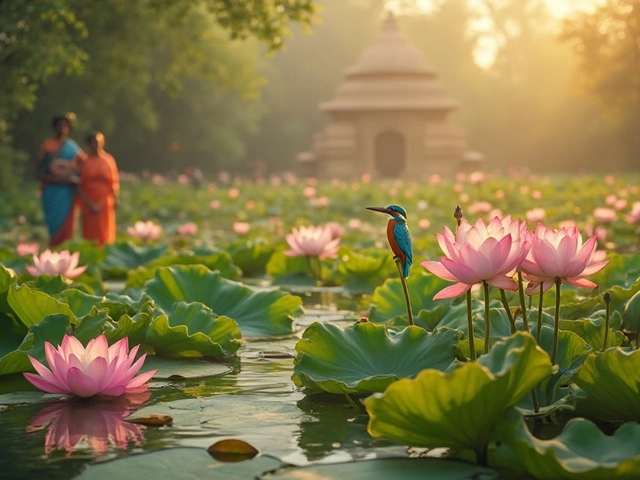India, a land known for its rich culture and diversity, has a special relationship with flowers. These vibrant blooms are more than decorative pieces; they're woven into the very fabric of traditions and celebrations. Whether it's a bustling wedding adorned with roses or a solemn religious ceremony set against the backdrop of marigolds, flowers hold profound significance.
But which flowers truly captivate the Indian market? Let's delve into the world of popular flowers in India, finding out which blooms are in highest demand and why they hold such appeal. With insights into cultural preferences, seasonal trends, and gardening tips, this article invites you to explore the flourishing flower landscape of the subcontinent.
- Cultural Importance of Flowers in India
- Top Flowers in Highest Demand
- Seasonal Preferences and Trends
- Tips for Growing Popular Flowers
Cultural Importance of Flowers in India
In India, flowers are woven into the everyday tapestry of life, playing a significant role in numerous cultural, religious, and social customs. Across the bustling streets and quiet villages of this vast nation, you’ll find that flowers in India are not merely embellishments but a language of their own. They communicate emotions, convey blessings, and symbolize everything from purity to prosperity. Their delicate petals are witnesses to many of life’s significant moments, gracing both celebrations and personal reflections. The strong connection between flowers and Indian culture can be traced to ancient scriptures and tales where flowers are often associated with deities and divine occurrences. Each bloom tells a story—take, for instance, the lotus, revered as a symbol of creation and purity, often depicted in the hands of divine figures like Lakshmi and Vishnu.
Flowers like marigold and rose hold a special place in religious ceremonies, their vibrant colors considered auspicious and promising. Offering flowers in temples is a ritual deeply embedded in Indian traditions, serving as symbols of devotion and beauty to please the gods. Festivals like Diwali and Holi see an explosion of colors not just in lighting or powders but also in the abundant use of flowers. The marigold garlands draped around doorways provide not only a visual feast but also emit a fragrance that invites peace and positivity. According to a report, India’s floral consumption increases during festivals by nearly 40%, a testament to their integral presence in these celebrations.
The use of popular Indian flowers extends beyond religious practices. They play an instrumental role in social gatherings and personal milestones. Weddings, for example, are incomplete without the sweet-smelling jasmine flowers, often braided into brides’ hair or strung into dazzling garlands. Recent wedding trends indicate a significant rise in integrating flowers into décor and rituals, with roses and orchids becoming day favorites for creating grand floral displays. Each of these blooms adds its charm and elegance, encapsulating the emotions and grandeur of the event.
On a more personal level, flowers are a preferred choice for gifts on occasions like birthdays, anniversaries, and expressions of gratitude or love. The fragrance of tuberose, known locally as 'rajnigandha', is beloved for its subtle yet lingering perfume, often used in homes and events to create a welcoming ambiance. “Flowers are the silent witnesses that speak heartfelt words through their presence,” a phrase captured aptly by one enthusiast in The Floral Chronicle. This simple truth resonates with many, illustrating why flowers maintain their cherished status in various aspects of life in India.
The vital role of flowers is preserved and promoted through local markets and fairs dedicated to floral trade across the country. Cities like Kolkata host grand seasonal flower expositions highlighting the diversity and cultural significance of blooms, drawing enthusiasts from all corners. The societal impact continues to flourish through innovation in gardening and flower gardening, reigniting interest in cultivating these natural wonders within households and communities. In essence, flowers in India embody more than beauty—they are a vibrant expression of the country’s profound heritage and evolving future.
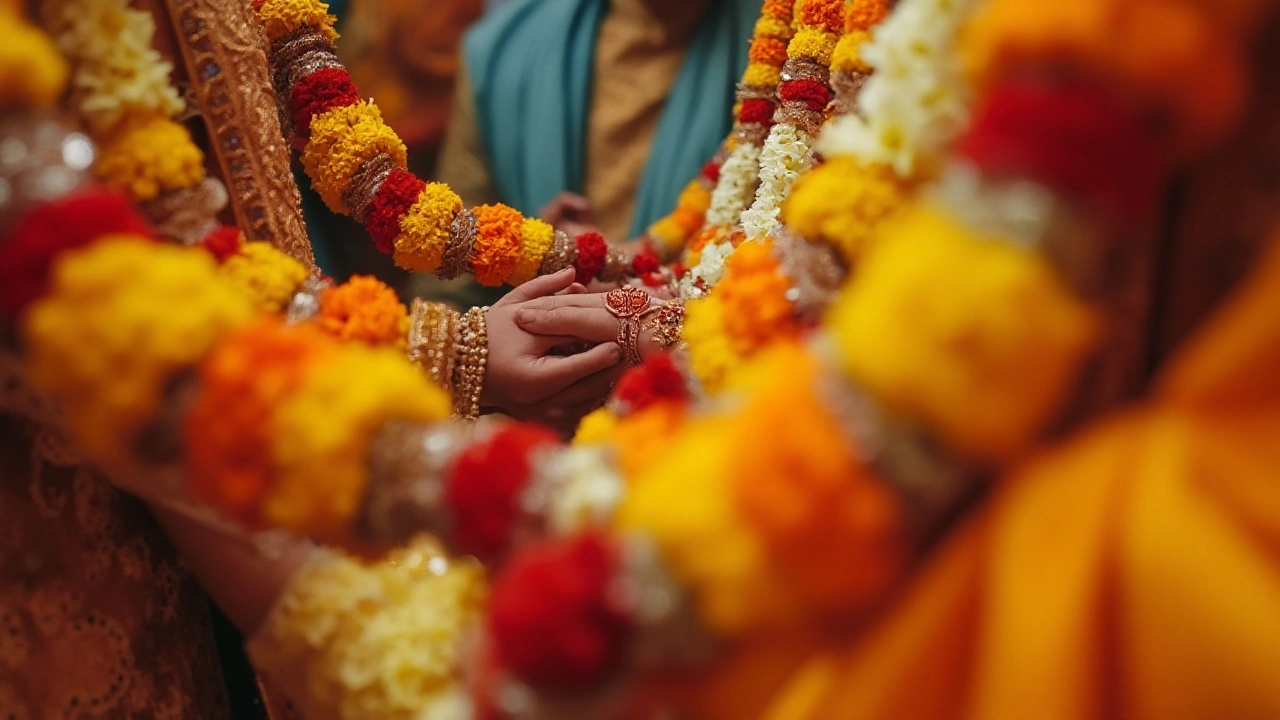
Top Flowers in Highest Demand
In the colorful tapestry of Indian society, certain blooms rise above the rest, commanding admiration for their beauty and versatility. Among the best-known flowers in India, there's none quite as ubiquitous as the Marigold. Loved for its intense, vibrant hues and distinct spicy fragrance, marigolds are staples at weddings, festivals, and religious functions. Often crafted into garlands and used in decor, they symbolize prosperity and have a long-standing spiritual aura. The demand for marigolds surges during significant festivals like Diwali and Durga Puja, and there's a sense of joy in spotting these golden gems brightening up every corner.
Coming up closely behind in popularity is the Rose, the timeless emblem of love and beauty. Around Valentine's Day, the demand for roses skyrockets, capturing the essence of romantic gestures. But the love affair with roses isn’t confined to this single day. Across Indian households, rose bushes are nurtured with care, adding elegance and a sweet fragrance to gardens. The versatility of the rose has given birth to a thriving market where unique colors and blooms are prized by florists and gardeners alike.
"The rose represents beauty and grace, but for many, it is also a testament to resilience," notes a renowned Indian florist in a popular gardening journal.Another major player is the Jasmine, admired for its delicate blossoms and intoxicating fragrance. Jasmine has found its roots deeply entrenched in the culture, often being worn as hair adornments by women in traditional attire. Popularly known as 'Mogra' in certain regions, it thrives during summer and exemplifies purity and serenity. There's a saying that if you see jasmine flowers in a garden, serenity isn't far behind.
Exploring exotic options, the Orchid has captured the imagination of urban India in recent years. Once considered too delicate, innovations in gardening techniques have made growing these flowers accessible to enthusiasts. Orchids add a touch of elegance and are often sought after as ornamental plants, gifts, and statement pieces in large-scale events. Balancing local favorites with a touch of international flair, the Indian market showcases a vibrant blend of traditional and modern choices.
| Flower | Seasonal Demand | Common Uses |
|---|---|---|
| Marigold | Festival seasons | Garlands, decorations |
| Rose | Valentine's Day, weddings | Gifts, ornamental |
| Jasmine | Summer | Adornment, rituals |
| Orchid | Year-round | Decorative, gifts |
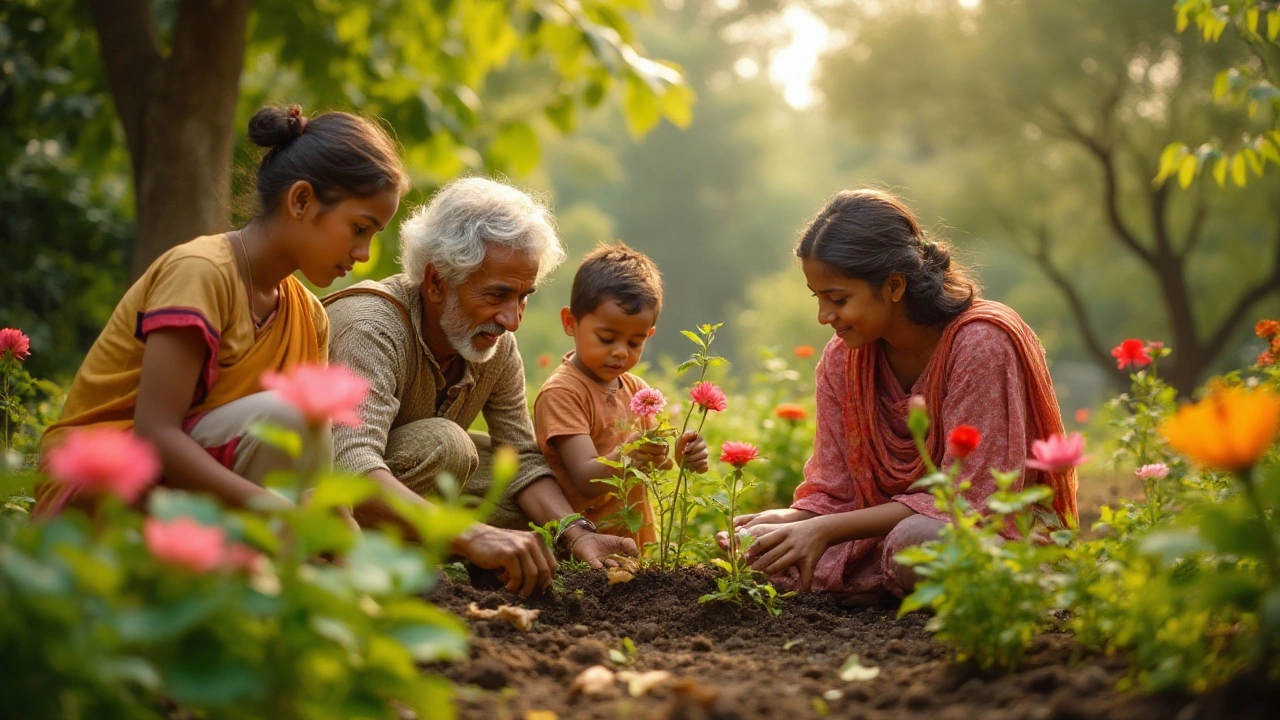
Seasonal Preferences and Trends
The demand for flowers in India shifts with the changing seasons, as each time of year brings forth its own set of beautifully unique blossoms that capture the hearts of many. During the cooler months from November through February, when the weather is mild and pleasant, a variety of blooms flourish and dominate the market. Winter is the time for chrysanthemums, dahlias, and gerberas. These vivid flowering plants bring a splash of color against the slightly dull winter backdrop, making them a favorite for both gardens and floral arrangements. Chrysanthemums, in particular, claim a special place not only because of their vivid hues but also due to their symbolism of friendship and well-being across various cultural narratives.
Spring, spanning from March to early May, marks the blooming period for a new palette of flowers, notably marigolds and roses. Marigolds aren't just significant due to their beauty—they play an essential role in religious rituals and Indian festivals such as Diwali and Navratri. Meanwhile, roses see an upsurge during this season, largely because of events like weddings and cultural celebrations which often coincide with this time. Whether it’s a bouquet of luscious red roses as a gesture of love or an offering at temples, roses' versatility and aesthetic appeal make them an indispensable part of the Indian flower garden.
The simmering heat from May through September might seem unfavorable for most flowering plants, but some varieties like hibiscus and lotus bask in this warmth and continue to thrive. Hibiscus, known for its resilience and vivacious colors, is frequently associated with offerings to deities and is considered sacred in Hindu practices. The iconic lotus flower, India's national flower, ubiquitous in its spiritual significance, also finds its glory as it blooms in blazing summer months. A simple break of the monsoons introduces another realm of possibilities; jasmine, for instance, mesmerizes with its arresting fragrance and abundant blossoms that stand resilient to the humid climate.
"In India, flowers are not just used for beautification. They're living embodiments of tradition and emotion," says Sandeep Nath, a botanist, shedding light on the vibrant flower culture that ebbs and flows with the turning seasons.
The autumnal months of October and November come with their own floral delights. This time calls for a surge in demand for lilies and orchids. Orchids, once considered rare and exotic, have gained tremendous popularity due to their long-lasting blooms and intricate designs that make them quite a statement piece. Lilies, with their large striking petals and divine fragrance, find sellers swamped with orders not just for personal gardens but also as accent pieces in home decorations and gifts.
Through an intriguing tapestry of flavors and hues, the floriculture industry in India adapts to meet the aesthetic and cultural requirements presented by the seasons. For any gardening enthusiast aiming to match their planting schedules with these seasonal demands, a careful consideration of the climatic conditions and the cultural tapestry will render bountiful results.
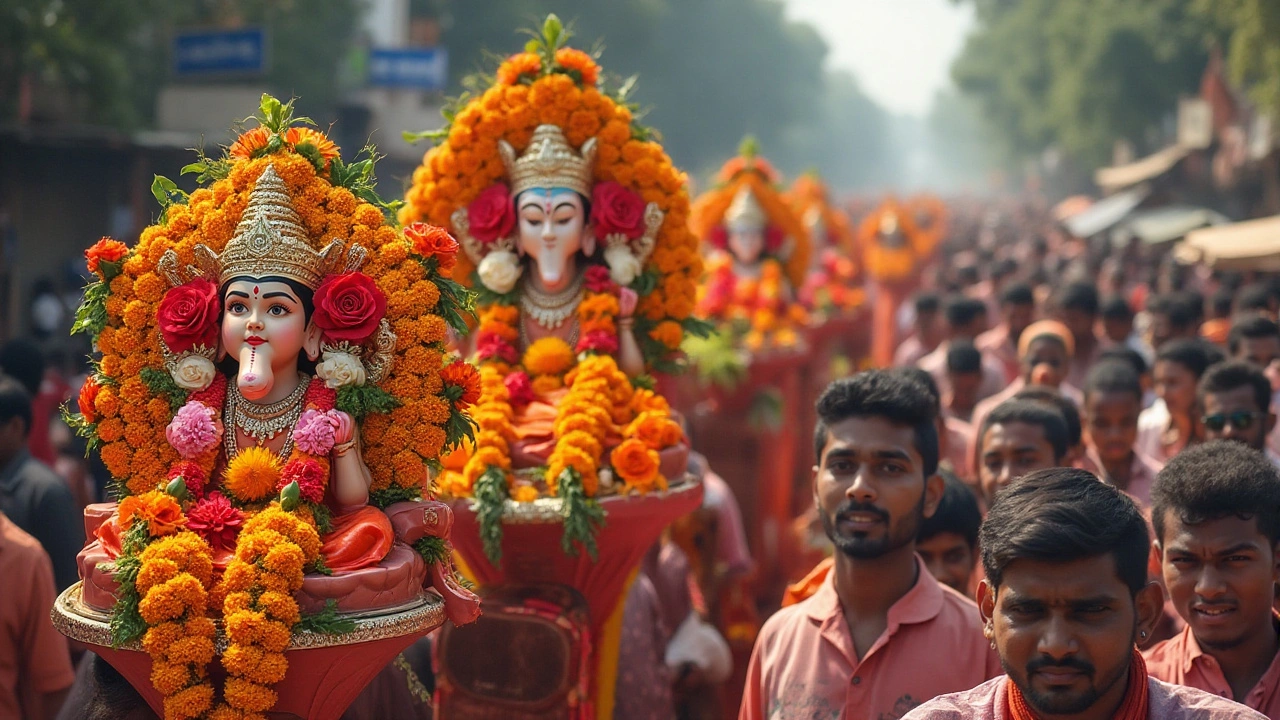
Tips for Growing Popular Flowers
In the vibrant tapestry of India's gardening landscape, growing flowers that meet the high demand isn't just an art; it's a deeply rewarding endeavor. Among the myriad varieties, roses, marigolds, and lotuses stand out not only for their beauty but also for their symbolic significance. To cultivate these beloved blooms successfully, one must understand the nuances of soil, climate, and care that each variety demands. Starting with roses, they're often the stars in any garden. These perennial favorites thrive best in well-draining soil enriched with organic matter. Regular pruning and precise watering keep these beauties in full bloom, ensuring their vibrant colors last through the seasons. Providing them with a generous amount of sunshine, coupled with some shade during the harsh midday sun, will make your garden the talk of the neighborhood.
Next, let's venture into the world of marigolds. These sun-loving plants are especially adored during festive seasons, with Dussehra and Diwali celebrations making them indispensable. Their easy-going nature makes them a favorite among both novice and seasoned gardeners. Plant marigold seeds in a sun-filled spot, ideally in soil mixed with compost for added nutrients. Marigolds require minimal watering, mainly ensuring their soil remains dry between watering sessions. Deftly removing spent blooms, a technique known as deadheading, is key to promoting continuous flowering and keeping these golden beauties radiant throughout their flowering period.
Lastly, the lotus, a symbol of purity and tranquility, holds a special place in Indian hearts, especially near temples and lakes. To cultivate this aquatic gem, one needs to embrace the art of water gardening. Setting up a water feature, such as a pond or a large container filled with at least two feet of water, is essential. Lotus seeds need warm temperatures to germinate, so they are best planted during the summer months. Ensuring the plant receives ample sunlight is crucial for its flourishing. Providing a layer of clay or heavy silt at the bottom of your container can offer necessary nutrients. With a little patience and care, you will soon witness the captivating sight of lotus flowers gracing the water's surface, enchanting all who behold them.
The joy of cultivating these flowers in India is twofold: the process itself is therapeutic, while the result adds unparalleled beauty to any space. Cultivating flowers involves dedication, understanding, and care, but the rewards manifest in the form of stunning blooms that reflect the spirit of this beautiful country. As the Japanese horticulturist Masanobu Fukuoka once said,
"The ultimate goal of farming is not the growing of crops, but the cultivation and perfection of human beings."
For completeness, here's a quick guide to help you select the right variety for your setting: roses respond well to cooler climates, marigolds prefer heat, and the lotus needs an aquatic environment. Selecting the right flower based on your local conditions can ensure a thriving garden. Invest in the right tools, such as pruning shears for roses or a watering can with a narrow spout for delicate marigold seedlings. With these tips, you're well on your way to creating a breathtaking floral paradise right at home.
